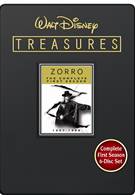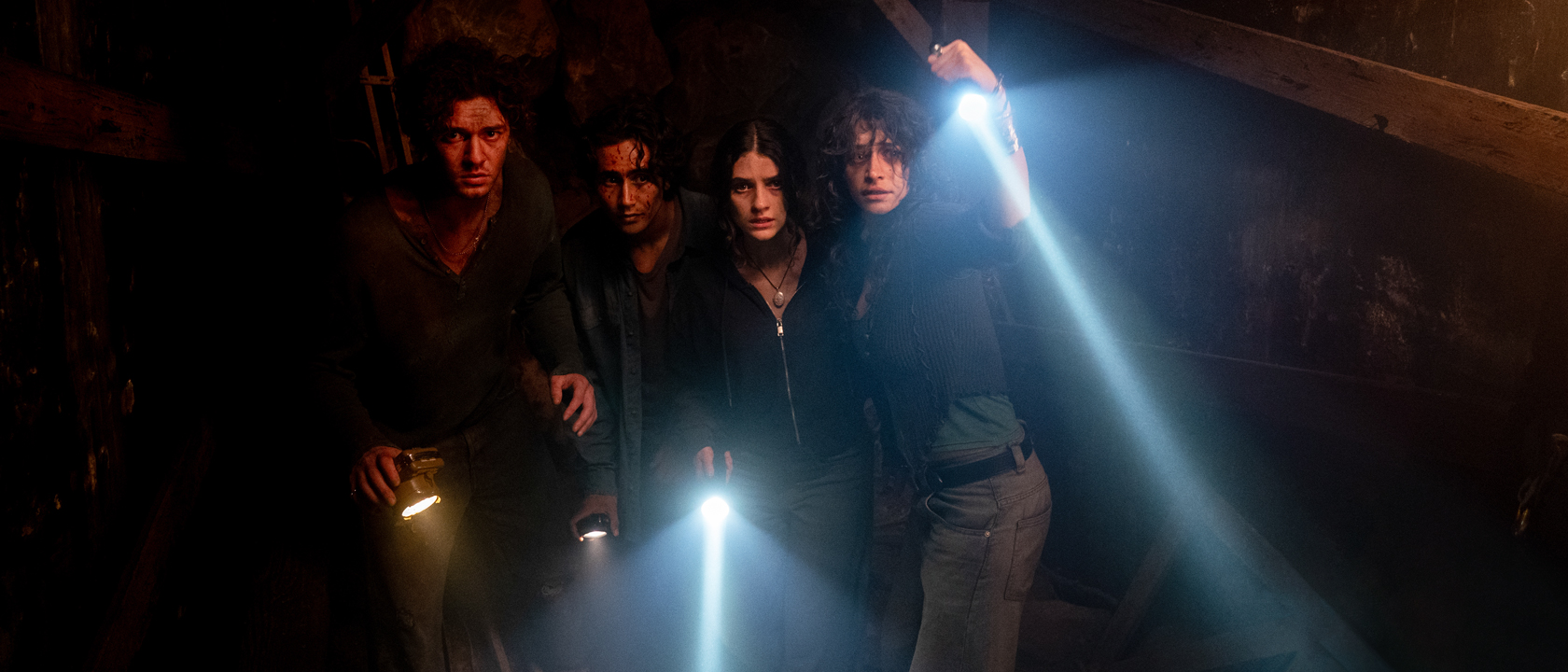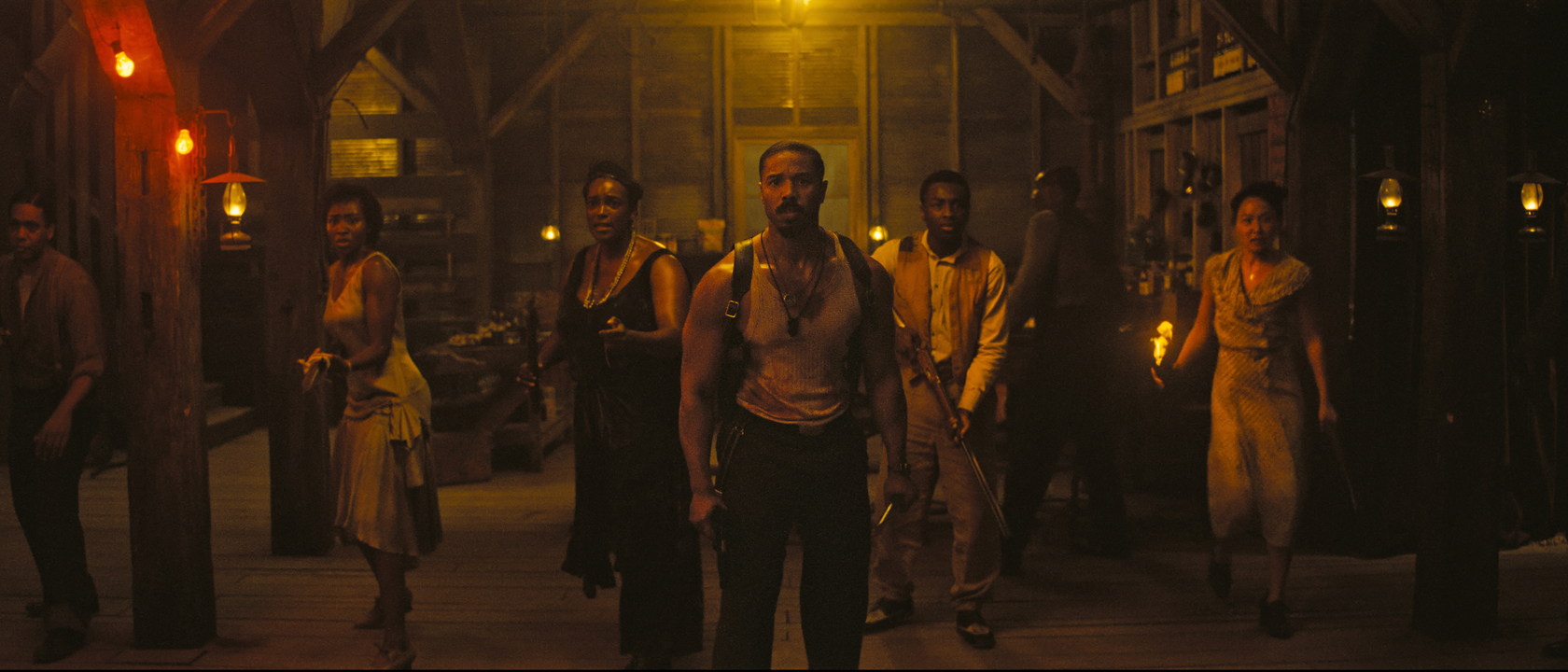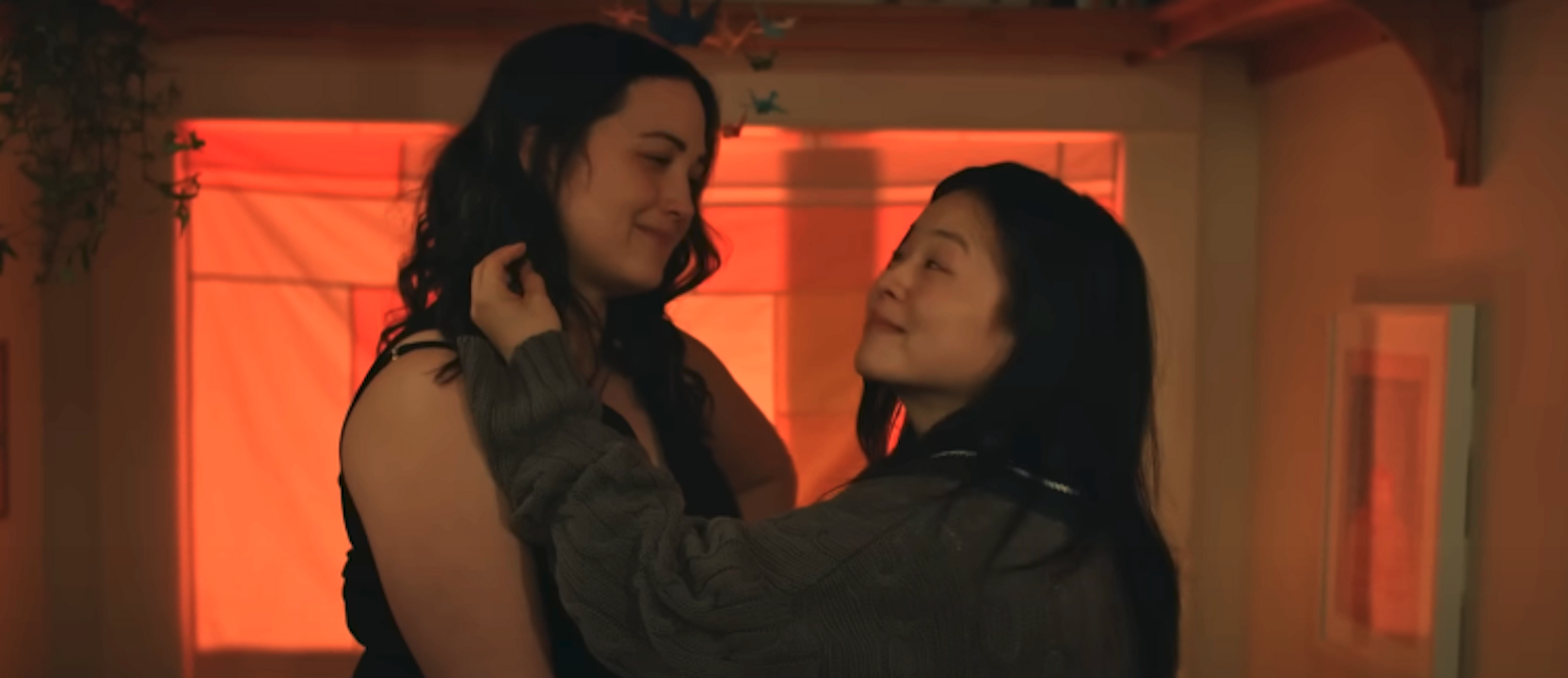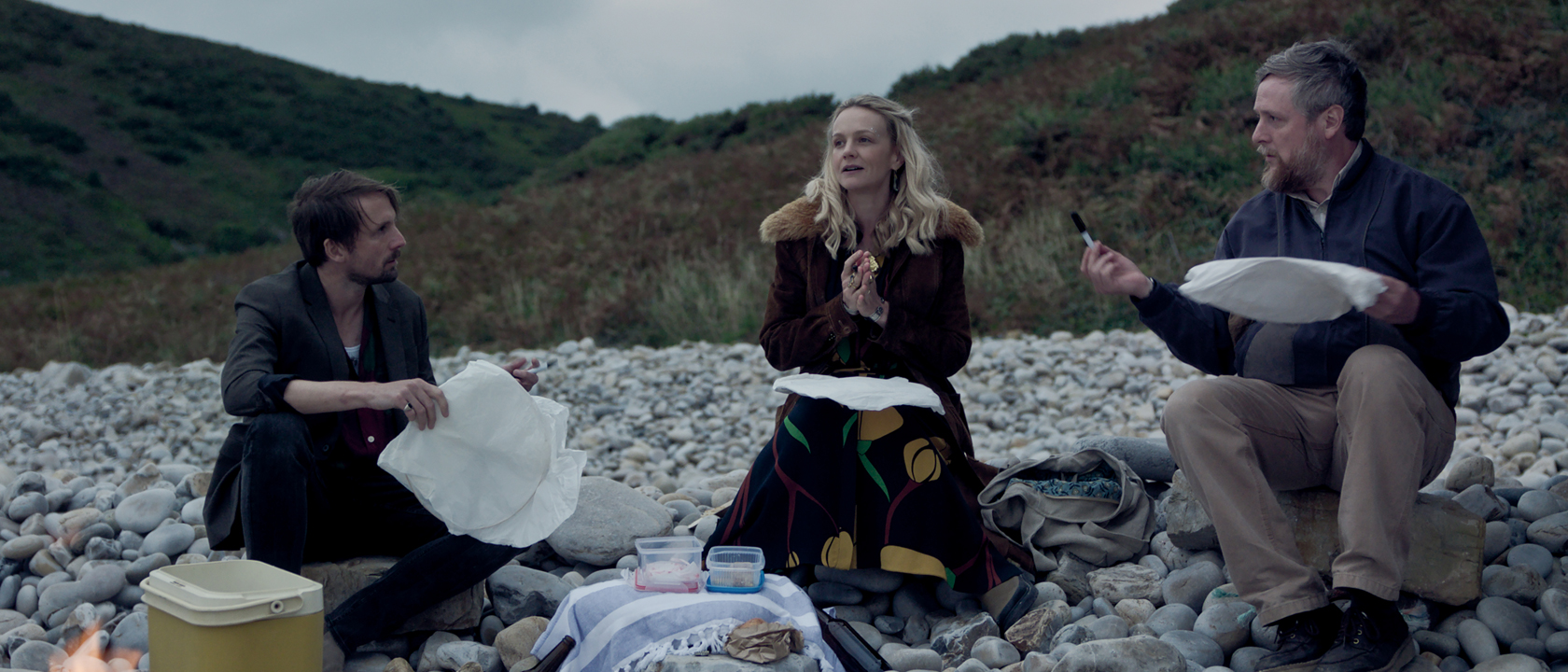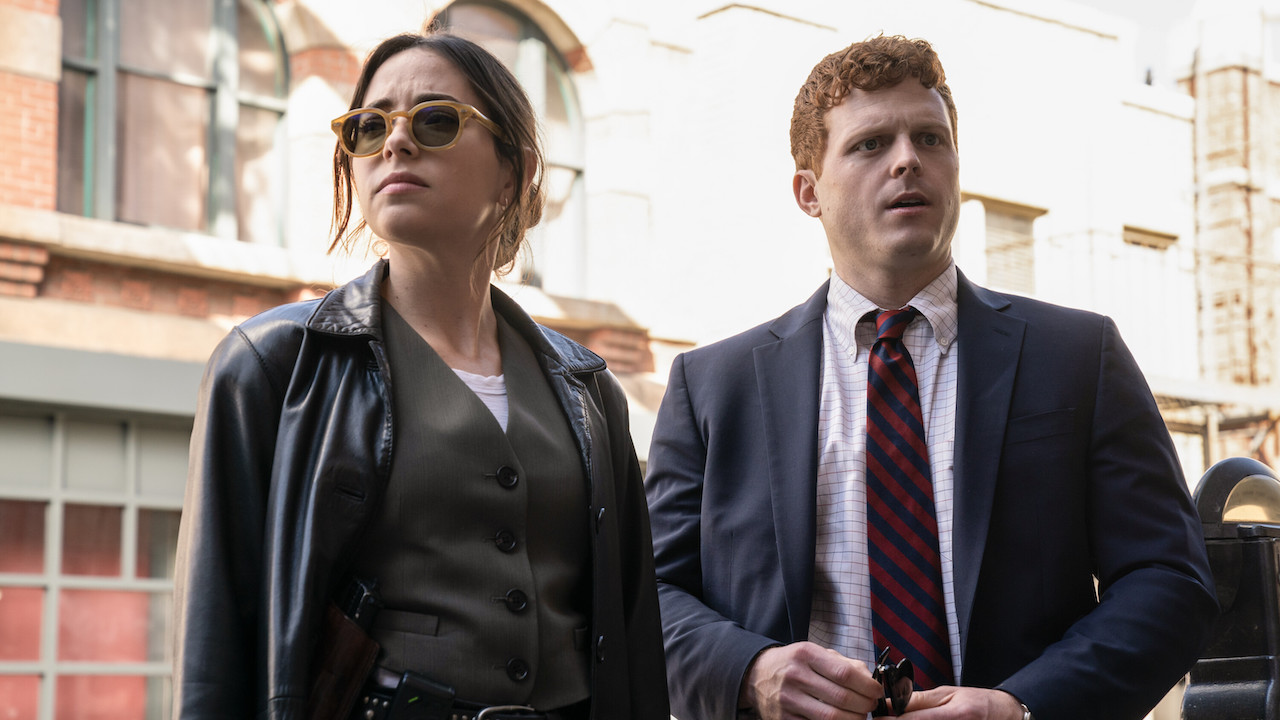Remember stories about the old days, when the good guys were good and heroes acted...well, heroically? When you could have action, drama, and a touch of comedy that didn't depend on tortured souls, barely checked rage, or triple-digit body counts? Believe it or not, Disney's just re-released the adventures of one such hero in two collectible sets, and it's pretty darn good. For those of you who came in late, Zorro is the secret identity of Don Diego de la Vega (Guy Williams, who later went on to further fame as the dad on Lost in Space). In the very early 1800s, Diego gets called home from his studies in Spain to the Californian pueblo that will eventually get its name butchered and shortened to "Los Angeles." Things aren't going well in the big pueblo, though, and during his journey Diego learns that his home has become a hotbed of corruption and crime where people couldn't care less about things like personal honor and their duty to the crown (a far cry from the Los Angeles of today). In a flash of inspiration, Diego tosses all of his fencing trophies and athletic awards overboard just before the ship docks, claims the hundreds of books he's brought for the Spanish missions as his own, and returns home as a clumsy, over-educated man of inaction. Now free to do what needs to be done, Diego takes on the masked identity of a charismatic swordsman bandit, standing up for the poor and the oppressed under the name of The Fox, or, as the locals call him, El Zorro.
It's over 50 years old, and it comes from the House of Mouse, so there's certain things you just have to accept with this series. The acting, directing, and dialogue all have those right-on-the-nose moments early shows were fond of. Some of the mysteries aren't quite as baffling as the characters seem to think they are. Sgt. Garcia (Henry Calvin) breaks out in song once or thrice and has a slapstick comedy moment with Corporal Reyes (Don Diamond) almost every episode. Despite all that, a surprising amount of Zorro is what we'd consider modern television. There's some actual drama, large story arcs that stretch out over multiple episodes, sexual innuendoes, and a huge amount of action and violence. Yep, on a pretty regular basis, people get whipped, stabbed, shot in the back -- heck, one guy gets impaled halfway through the first season! On a Disney show aimed at kids! One produced under the watchful eye of Walt himself! Kind of makes you wonder at what point everyone got so soft over there, doesn't it?
Those overall story arcs are part of what makes this show a success. While each half-hour show stands on its own, it's also part of a larger story. You can't randomly shuffle the episodes and view them in any old order. The first 13 episodes (over six hours' worth) show Diego establishing himself both as an unthreatening intellectual and as the gleeful vigilante Zorro, all while dealing with the corrupt Captain Monastario (Britt Lomond) who's determined to use his position in Los Angeles to become the wealthiest man in California. This arc's barely done, however, when Diego and his faithful manservant Bernardo (Gene Sheldon) discover clues of an even wider criminal conspiracy. The show then spends the rest of the season -- 26 episodes -- exploring the depth of this conspiracy and revealing the Moriarty-like mastermind known as The Eagle (Charles Korvin) and his plan to take over all of California in a military/economic coup. Season two begins with Diego, Bernardo, and Diego's father (George J. Lewis) traveling to Monterrey, where they discover California's corruption reaches all the way to the lieutenant governor, and Zorro must deal with an impending peasant revolution and a set of policies that border on ethnic cleansing.
Did I mention this was a Disney show?
Don't get me wrong. These two sets are very family friendly, just not in the mind-numbing, IQ-dropping sense that term has come to embody. This is old-school Disney, the company that made Pinocchio and inspired all the guys at Pixar. Honestly, I went into this expecting to be mildly entertained and found myself getting more and more engrossed in the ongoing story. My girlfriend, who had deadlines of her own, started out with good-natured heckling of my assignment and then she started getting pulled in. For a good six days and nights, our lives became all about Zorro, his supporting cast, and his all-too-catchy theme song, which we could not get out of our heads.
Yeah, you laugh now, but just wait...you'll see.
Alas, every swordsman lets his guard down eventually. Zorro begins to falter in the middle of season two after a surprisingly touching episode where Diego decides to give up his alter-ego and accept the Governor's offer of amnesty if he'll unmask himself. It's every hero's dream: to retire, get the girl (Jolene Brand), and resume normal life. Alas, he misses the deadline when he's taken prisoner by another masked bandit who has a different view of the amnesty (and I won't ruin things by revealing who that turns out to be). After that point, the show becomes a series of one-offs and three- or four-episode arcs that just never have the same punch that those first ones did. They're still enjoyable, but they end up feeling a little more...well, a little more Disney. It's as if someone suddenly realized they were making a television show about a guy with a mask and a cape and decided it didn't need to be taken all that seriously anymore.
Which is a real shame, because Zorro taps into those elements that made most of us love masked heroes in the first place. While there's still some gray in his world, there's also a lot of black and white he can act on without much hesitation or moral wrangling. He's brave and self-sacrificing, but he also realizes that getting to be a hero is kind of fun, and that joy gets passed on to the audience. While each set comes in a special collectible tin, some impressive design work fits all six discs of a given season into a single, regular-sized DVD case. Each tin also comes with some photos of Williams in both roles, plus a collectible pin.
There are a few nice special features on each of the six-disc sets, but in a series that's half a century old it's understandable that there aren't any cast or crew commentaries. Film critic Leonard Maltin introduces each season with some history of the characters and also of the show itself. While it was back in the pre-cable days of only three broadcast networks, it's still stunning to hear that Zorro averaged just shy of a 40 in the ratings, and went even higher during its second season. In a similar vein, the season-one set has a solid little documentary, The Life and Legend of Zorro. This featurette details the creation of the character 90 years ago by pulp writer Johnston McCulley, the subsequent film adaptations with actors like Douglas Fairbanks and Tyrone Power, and how Walt Disney decided to make an impressive 1950s financial investment in bringing the hero to the small screen (and eventually came to legal blows with the ABC network over the show).
For long-time fans, though, the best bonuses are some long-unavailable one-hour specials. There are two in each collection, which is a bit bothersome, because if you want to watch the whole series in order you have to flip back and forth between the two sets. These were planned stories for the show's third season, which never happened because of the above-mentioned issues. After two years of legal wrangling, they made their way onto the weekly Walt Disney anthology show and then vanished into the vaults. Like the second half of season two, they're not the greatest, although "Auld Acquaintance" (part of the season-two set) does toy with an idea we don't see often in this kind of series -- a visitor comes to California who knew our hero Diego was a championship fencer and athlete in Spain, not the laid-back, everyman bookworm he pretends to be.
There isn't much for special features past that, but it's worth mentioning there's a virtual treasure trove of unintentional Easter eggs taking the form of dozens of cameos. A huge number of yet-to-be-established actors -- and even some already established ones -- appear in these 37 hours of television, many of them so young it'll take two or three looks to convince yourself who they are. Keen-eyed cinephiles will spot Cesar Romero, Lee Van Cleef, Richard Anderson, Annette Funicello, Robert Vaughn, Ross Martin, and even Ricardo Montalban.
For longtime fans of the masked bandit, these sets are pretty solid and definitely worth the price (which isn't that bad for 18 and a half hours on each set). Those casually interested will find it's still an entertaining way to spend a few afternoons or evenings. Perhaps best of all, folks with kids will be pleased to see it's a relatively safe way to introduce the little ones to the heroic, mask-wearing, swordfighting lifestyle we all wanted to grow into as adults.
The Last Of Us Season 2, Episode 2's Heartbreaking Ending Reminded Me Of A Key Walking Dead Episode (But Not The One You'd Think)
NCIS: Origins' Showrunner Revealed 'The Real Highlight' Of Learning Season 2 Was Happening, And I Discovered They Pulled Off An Amazing Achievement In The Process
Why One The Summer I Turned Pretty Fan Thinks A Parallel Between The Latest Poster And An Audrey Hepburn Movie Spoils The End
